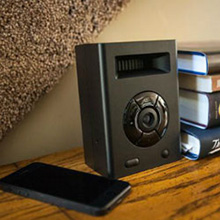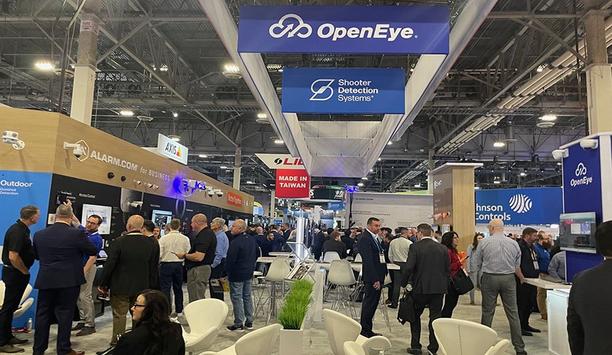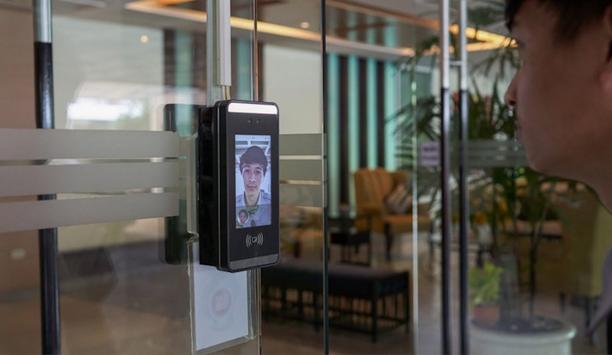“The price has come down, and the products are becoming easier to use,” says Todd Morris, founder and CEO of BrickHouse Security, a direct-to-consumer and business-to-business supplier of security cameras. “Previously they were very hard to use and to install.”
 |
| A covert camera catches what’s happening when someone in the home doesn’t know they’re being observed |
BrickHouse Security’s newest product, introduced at the ASIS 2014 show in Atlanta, is a remote-view hidden camera designed to be easily integrated with a complete home security system. Retailing at right under $200, the Observa camera sits unobtrusively on a bookshelf and looks like a Bluetooth-type audio speaker. The WiFi-enabled camera inside offers cloud-based video recording and storage and even infrared “night vision” technology to see in the dark.
“There are two main reasons people choose a covert camera,” says Morris. “One is aesthetics -- they just don’t want a camera to stand out because it’s ugly.” (They also don’t want holes drilled in their walls, which isn’t necessary with WiFi connectivity.)
Another reason is an extension of the “nanny-cam” concept. A covert camera in the home can provide additional peace-of-mind to working parents concerned about babysitters taking care of their children. The growing need for two-income households is driving demand.
Video can also keep watch on the activities of maids, dog walkers, home healthcare workers or even someone who’s watering the plants. “It answers questions such as ‘Did they show up? Did they do what they said they would do? Did they do anything else?’” says Morris. A covert camera catches what’s happening when someone in the home doesn’t know they’re being observed. Other uses include monitoring vacation homes and keeping up with teenagers. Outside the home, video can provide an early warning of an intruder or prevent vandalism.Covert IP cameras are now pre-configured to be easy to install by a homeowner. Basically, installation involves plugging the camera in and pushing a WPS button that automatically links to a homeowner’s router, does a “handshake” and is connected to the cloud-based service. Customers are provided a secure user name and password in an email before the camera even ships. Everything is Web-based, and there are apps to access video via smart phones and tablets.
Entry by Google (which now owns DropCam) into the home video camera market is good news because it helps to raise awareness, says Morris. “A rising tide lifts all boats.” He notes that companies from Google to local cable companies are advertising to promote the idea of video surveillance in the home.
 |
| Covert IP cameras are now pre-configured to be easy to install by a homeowner |
Covert cameras are just part of a broadening range of video products available for the home market. Beyond the two models currently provided by DropCam, other manufacturers offer cameras for the home that have pan-tilt-zoom, can be installed outdoors, and are enclosed in domes. BrickHouse Security itself has more than 100 designs and does 60 percent of its business over the Internet. BrickHouse also sells to some dealers, and refers customers to dealers if they seek professional installation services.
There are only two limitations on where a covert camera can be placed in the home. In the case of a live-in nanny or maid, the camera cannot be placed inside his or her bedroom (where they would expect privacy). Also, cameras cannot be placed inside bathrooms, although they can be placed outside a bathroom looking into the door.
“Video inside the home is so much less expensive and easier to use,” says Morris. “There’s a massive influx of new people it is available to.”










































